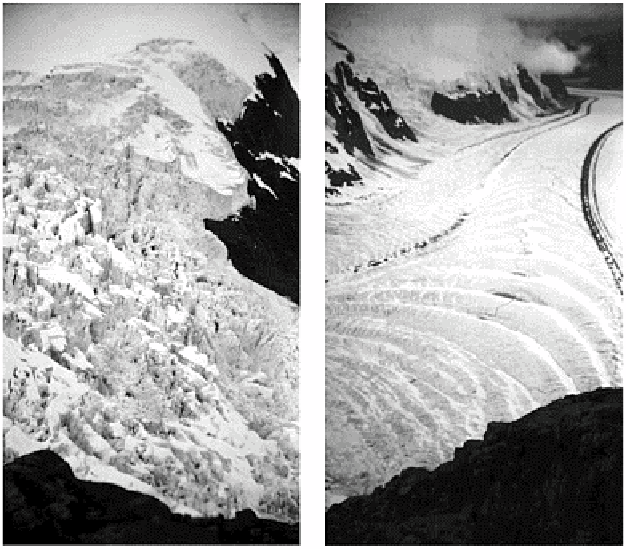Environmental Engineering Reference
In-Depth Information
compressive flow
. Similar flow patterns develop in glacier long-profiles over bedrock
irregularities, generating brittle failure with diagnostic surface crevasses. These processes
are seen at their best across steep
icefalls
, with the glacier surface crevassed into huge
blocks or
seracs
by extending flow at their crest and fused to form
ogives
in compressive
flow at their base (Plate 15.4).
Ice velocity is influenced by seasonal changes during the mass balance year and
longer-term climate change. Accumulation may increase basal shear and accelerate flow
in winter, whilst greater atmospheric warmth and meltwater generation can have the same
effect in summer. Responses do not have to be immediate and it is quite common for
several years of increased accumulation to send a pulse or
kinematic wave
of thicker ice
down-glacier at velocities three or four times the average flow. Metastable glaciers or
zones within ice sheets are susceptible to sudden changes in behaviour. Extreme
conditions of ice build-up or sudden transformation of glacier bed
Plate 15.4
Extending and compressive flow in the Vaughan
Lewis icefall, Alaska. Crevassing fractures the 1 km wide
glacier surface into building-size blocks as it enters the
icefall (left) compared with compressive ridges and ogives as
it exits into the Gilkey glacier (right).
Photos: Ken Addison.

